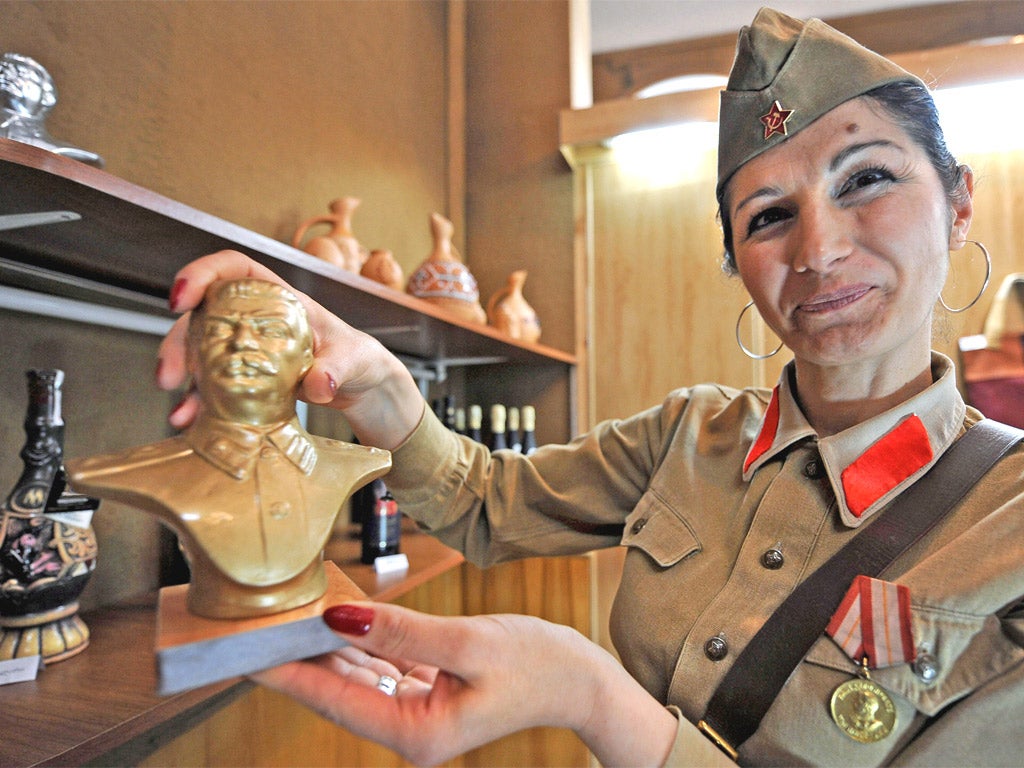
It is an unusual way to begin a trip to a museum. "This museum is a falsification of history," reads a makeshift shiny banner placed at the grand entrance to the Stalin Museum in the Georgian city of Gori. "It is a typical example of Soviet propaganda and it attempts to legitimise the bloodiest regime in history."
Iosif Vissarionovich Dzhug-ashvili, who would later go down in history as Joseph Stalin, pictured, was born into a Georgian family in Gori in 1878, and although the regime he led has long since collapsed, the city still has a complex relationship with its notorious son.
Until two years ago, a huge statue of the dictator stood in Gori's central square, long after similar monuments had been demolished in other cities across the former Soviet Union, and many of the city's inhabitants still think fondly of the leader that most of the world views as a bloody dictator.
The large museum, first opened during the Soviet leader's lifetime, resembles a shrine to Stalin, and the new banners about the horrors of his regime at the entrance are placed incongruously alongside a shop selling Stalin T-shirts and cigarette lighters.
The pro-Western government of Mikheil Saakashvili, which came to power after the Rose Revolution of 2003, has tried to wipe out everything Soviet from the small country, which spent 70 years as part of the Soviet Union. Its plan for the Stalin Museum is to turn it into a Stalinism Museum. The government intends to raise funding for a complete renovation, keeping the existing exhibits about the dictator's personal life and rise to power, but adding information about the consequences of his regime, including the victims of collectivisation, famine in Ukraine, the purges, and the Gulag, the organisation that ran the many Soviet forced labour camps.
"There are many museums about the occupation of countries by the Soviet Union, in Estonia, Latvia and elsewhere," says Georgy Kandelaki, an MP from Mr Saakashvili's party who is one of the initiators of the project. "But there is no single museum that tells the story of Stalin's horrors."
Those who work in the museum are less than impressed. "Apparently there are going to be big changes, though nobody has asked us for our opinion," says Olga Topchishvili, a guide for 29 years. While she acknowledges the darker side of Stalin's rule, it warrants only a few lines in the tour. "Personally I think that he was a great statesman, and he really cared about the fate of his country and his people," she says. "But of course things didn't work out as planned. And they were scary, terrible times. Nobody should try to hide that."
The only part of the museum to cover anything negative is a small section dedicated to the purges in which millions were shot or sent to labour camps. Soon, the museum will look very different. "No democratic and free country should have a museum like this," says Mr Kandelaki, who says he expects the renovations to be completed within two years and a new, modern museum to be opened on the same spot. "We will have a real museum that will tell the truth about this horrible regime."
Join our commenting forum
Join thought-provoking conversations, follow other Independent readers and see their replies
Comments